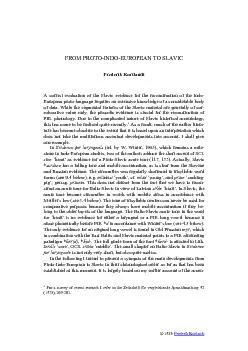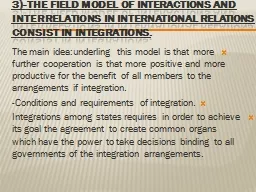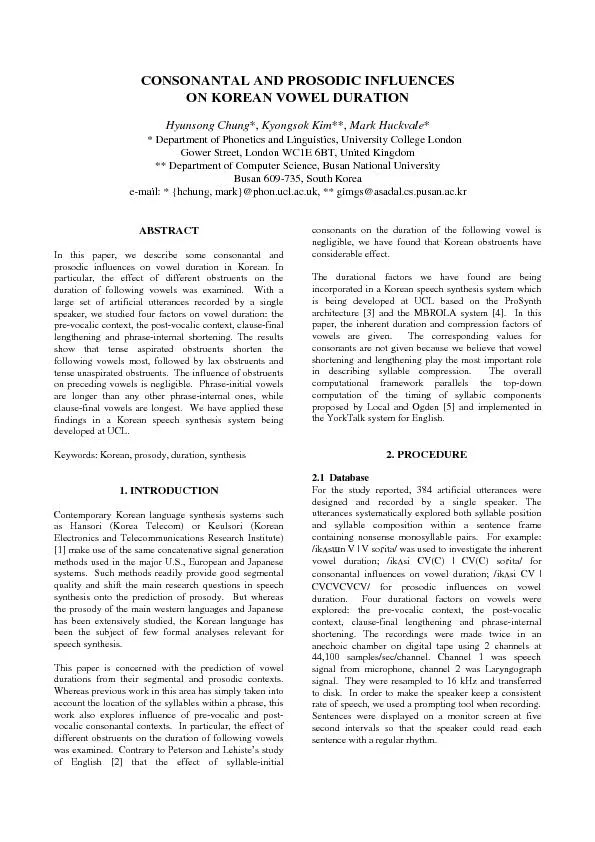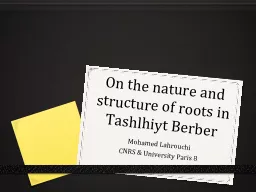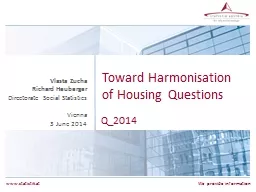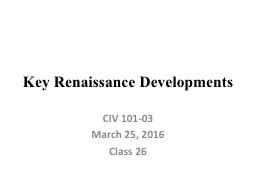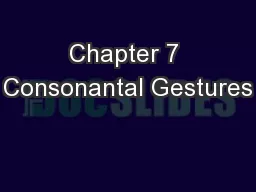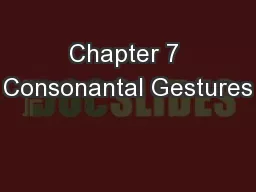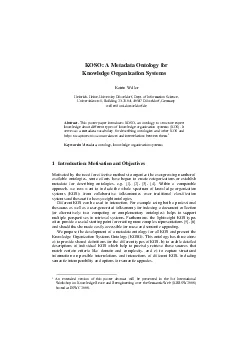PDF-vocalic, and consonantal developments and their interrelations. For th
Author : alida-meadow | Published Date : 2015-10-24
labial p b b dental t d d s palatovelar labiovelar k g g Vowels and resonants e o i u r l n m H Several developments can be dated to the internal history of the
Presentation Embed Code
Download Presentation
Download Presentation The PPT/PDF document "vocalic, and consonantal developments an..." is the property of its rightful owner. Permission is granted to download and print the materials on this website for personal, non-commercial use only, and to display it on your personal computer provided you do not modify the materials and that you retain all copyright notices contained in the materials. By downloading content from our website, you accept the terms of this agreement.
vocalic, and consonantal developments and their interrelations. For th: Transcript
Download Rules Of Document
"vocalic, and consonantal developments and their interrelations. For th"The content belongs to its owner. You may download and print it for personal use, without modification, and keep all copyright notices. By downloading, you agree to these terms.
Related Documents

